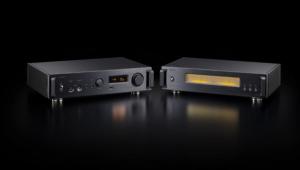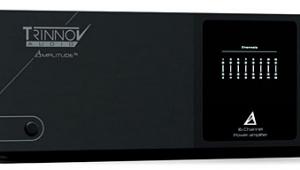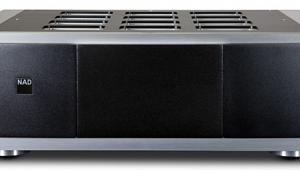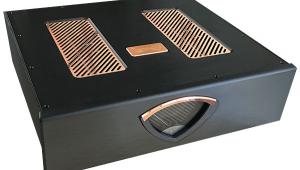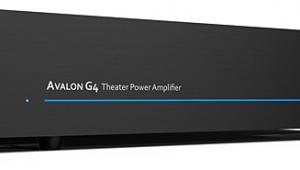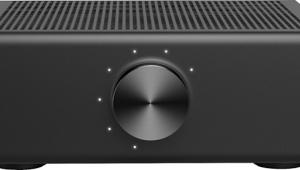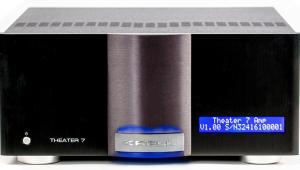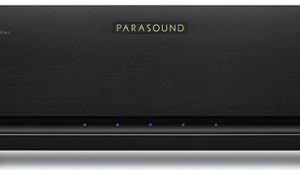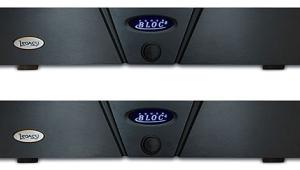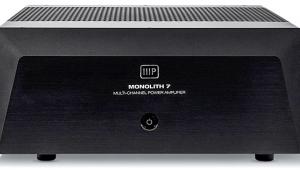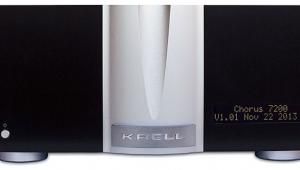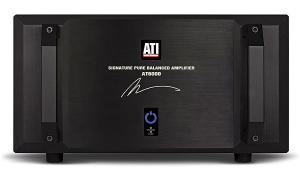Krell Home Theater Standard 2 & Theater Amplifier Standard pre-pro and 5-channel amp
Actually, Dr. Melfi has a chair and a couch. Her expression is noncommittal as I choose between them—the psychoanalysis has already begun. Right away, she suggests a word game: she'll say something, I'll respond with the first thing that pops into my head. I've used the technique myself to out disloyal employees in the, uh, refuse recycling business. I guess that semester and a half of college was money well spent.
"Family," she says.
"Not in the face," I say.
"Boating."
"Accident." I smile, remembering good times at the lake in Reno.
"Krell."
"Amplifiers, of course." I shoot her a look that means she's got me questioning her wrapping.
She sighs. "I see I've got my work cut out for me."
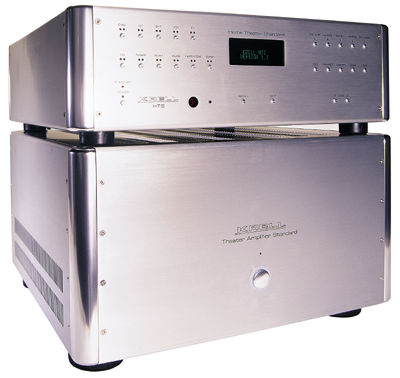
You, too, are forgiven for still thinking of Krell Industries as an amplifier company. After all, Dan D'Agostino built his company on take-no-prisoners amplifier designs. But Krell has been manufacturing CD players and 2-channel preamps for more than a decade. Integrated amps, even speakers (see the August 2001 Stereophile), now inhabit the Krell stable. How could they ignore the home-theater market?
They haven't. The Home Theater Standard 2 and companion Theater Amplifier Standard comprise Krell's second generation of home-theater products.
Krafting Krell: The Home Theater Standard 2
The Home Theater Standard 2 isn't just a beautiful-looking processor, it's ergonomic. The lower left corner of its front panel offers a Power/Standby switch (like some other high-end processors, the unit's true power switch is on the rear). Above that, two rows of buttons select among 10 possible inputs, while an 11th button selects between two control zones. Here's where it gets deviously good. Above each of those 10 input buttons are two small lights, one red, one green. The red lights up when the input is assigned to the main room; the green glows when the signal is sent to the remote location. The zone button also has corresponding red and green lights to let you know which zone you control. You can even turn off the remote zone separately (useful if you're running a separate power amp for that zone; the HTS2 can "signal" that amp to shut down) by first selecting the remote zone, then pressing the On/Standby button. Cool beans! One small downside to this, however, is that the blue and red lights, as few and tiny as they are, can still distract in a darkened room. I advise setting the unit off to the side. I wouldn't hide it behind solid doors, however, unless the cabinet is very well ventilated—the Krell runs very hot.
In appearance, the right side of the front panel is practically a mirror image of the left. The top row of buttons allows you to select among five sound-processing modes, though you won't find Dolby Digital or DTS among them—the processor detects them automatically to save you a step. The second row down has five more buttons, four of which let you trim or boost levels to the various channels, should your source demand it, using either the front panel or the onscreen display (if enabled). Other notable controls include three compression modes—none, 11dB, or a 22dB Night mode, for apartment dwellers who fear their neighbors' wrath.
The rear panel is chock-full of inputs and outputs, but it's more logically grouped and not nearly as cramped as those on most mass-produced receivers, whose quest for density makes them plug-ugly. The HTS2's rear panel is divided into five functional units. The multichannel analog output section has six single-ended (RCA) outputs and six balanced (XLR) outputs, along with a single multichannel db-25 pin output. There are plenty of digital and analog inputs and outputs, including one analog balanced (XLR) stereo input. The HTS2 does not include an RF-AC3 input; without an outboard RF demodulator, you'll be able to play only the PCM tracks of your Dolby Digital laserdiscs. (Krell doesn't make a demodularor, but they're available elsewhere—though becoming increasingly rare.)
The video section features two component inputs (Y-Pr-Pb) and one component output. The four composite and four S-video inputs, and the two composite and two S-video outputs, should be enough for a slew of VCRs, laserdisc players, video games, satellite dishes, cable boxes, and camcorders. Each of the inputs can be configured to automatically select the appropriate audio and video defaults, and even send out any one of four 12V DC control signals to trigger a useful function in other components. You might, for example, set up the system to have your TV fire up when you select DVD, but remain off when you select CD.
The HTS2's small LED display responds to volume changes, source selections, muting, and other operational changes, but does not function as the main setup display—for that, you'll need to connect a video monitor.
Explaining the onscreen display (OSD) system Krell has chosen to implement on the HTS2 is fairly simple. Even if the factory defaults do not meet your setup (for instance, DVD defaults to the composite input number one), you can easily change this in the onscreen setup.
Setup itself was very easy, and the onscreen setup menu (once I found it) is logically arranged. If you step through the OSD menus in order, you're virtually guaranteed success. But the speaker-configuration menu of the HST2 was a bit of a surprise for such a high-end product. It provides only a single 80Hz crossover point, or the option of running the speakers full-range. I didn't mind running my MartinLogan Prodigys as full-range speakers, but I would have preferred setting the rear-channel ML ReQuests to cross over at 40Hz and the center-channel ML Theater at a much higher 100Hz. Such flexibility is not common among preamp-processors, even high-end designs, but is available on my current surround processor, the Theta Casablanca. I ended up running the Prodigys and ReQuests full-range with the Krell, and crossing over only the Theater.
The Krell's wafer-thin metal remote was a joy to use. While it's not backlit, I quickly memorized the most frequently used buttons, which were easily identifiable in the dark. To get such a small remote, Krell used a large, coin-sized watch battery. While the remote was fond of slipping into cushion cracks, its sturdy case meant there was little chance of damage.
The HTS2, at present, lacks a set of multichannel analog inputs for SACD or DVD-Audio. Also missing are THX processing and a few of the more recent surround modes. But those will be short-term limitations. If you must have SACD or DVD-A (and I must), not to mention THX 5.1, THX Surround EX, DTS ES, and Dolby Pro Logic II, Krell has announced that there will be a Home Theater Standard 7.1 available early this year that will add all of these features. It will also offer higher-quality analog-to-digital and digital-to-analog converters (24-bit vs. the current 20-bit). There's even a THX button ready and waiting on the remote (it's inoperative on the current HTS). But the best news? The HTS2 and the original HTS will both be upgradeable to the HTS7.1!
- Log in or register to post comments
